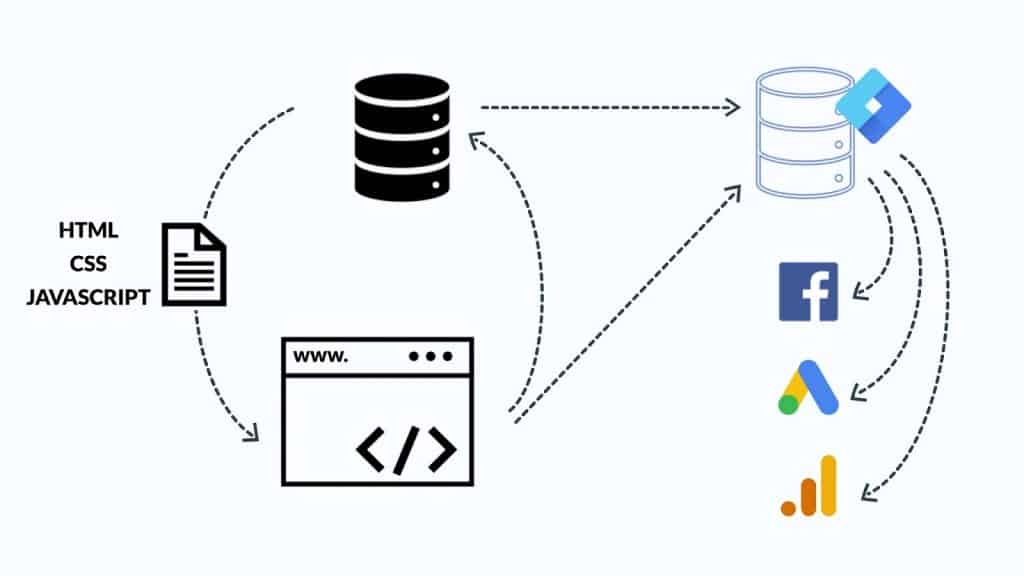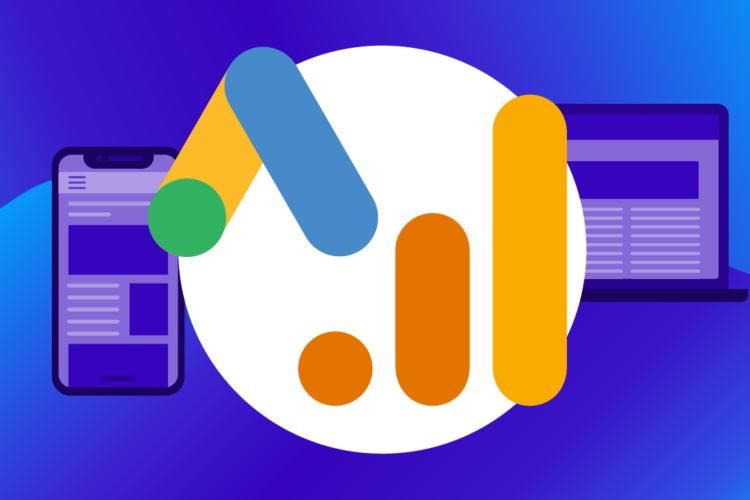
Third party tracking is using technology provided by a 3-rd part ( Facebook, Google, Bing etc ).
Since the start of digital marketing advertisers have relied primarily on 3-rd party tracking codes to collect their web visitors data. The system works for the most time and its users have achieved great results in terms of revenue and conversions. The quality of the data is good and most users on the web even in 2023 don’t block this type of 3-rd party tracking.
Then why make the move?
First Facebook was able to anger Apple in 2021 and the former allowed their users to opt out from tracking on Facebook & Instagram with their new IOS 14.5. This was such a major blow to the ad business of Facebook that they will never recover from this fully in my opinion. The best and only way to bring back the quality of data from tracking and thus the advertising results is to make a move from Web Facebook pixel ( tracking code ) to the Facebook conversions API. This is the tool which Facebook offers for 1-st party tracking. You might be asking how is that 1-st party since FB is providing the code? It is because the code is on your server ( hosting ) and this makes it a 1-st party in the eyes of regulators. By doing that advertisers are able to improve their data and results despite the gigantic move from Apple to destroy Facebook as a business.
Ad blockers in browsers are another reason, there are probably 1000 of different plugins which allow net users to prevent your web based tracking codes from collecting any information. Some of them are even free. Apart from that some web browsers like Safari can prevent cross site and cross device tracking with a click of a button in the settings menu. This is a big problem for businesses who rely on data to optimize their campaigns and analyze the results of their investment.
Is there a silver bullet? No, but also yes.

Google tag manager has two types of containers ( code ) which the user can place in different parts of their website frontend or backend. Most advertisers continue to rely on the Web container which is implemented via the front end ( client side ) of the website to collect data for all purposes. This tracking method fully counts as 3-rd party tracking in 2023. I’ve already explained most of the issues with it. Despite those issues marketers and business owners through the years were reluctant to deal with them by moving to 1-st party tracking through a server side container. This created a real opportunity for those who did migrate because having more data means one can train their campaigns better on average over time. Despite that many marketing agencies did not advise their clients to do this move despite the financial incentives. In my personal opinion based on work I did in such agencies this happens because their management is actually bad and gives the work to undertrained young people who become overwhelmed quickly with the amount of work.
Google in particular were able to recognize that and offer two ways to implement a server side container.
The first one is by using Google cloud as a server on which to implement the container. The platform provides clear instructions on how to do that which most experienced marketers can follow or send to their clients. The catch is that over a certain amount of monthly traffic Google wants you to pay for their server which is totally fine by me. Because Google Analytics has been free for most users over the years people got used to using great tracking technology for free! This is wrong because data is the new gold of our age and it is becoming more valuable with quality. I personally advise my clients to first let me brief their developers what they have to do before going to Google cloud. The service ( G. cloud ) works great but if the client can host the server side container on their server they should do it.
Google tag manager is unmatched in being able to manage all tracking codes from different platforms in one interface so implementing FB conversions API through it is a good decision as well as implementing any other tracking. This is a good practice which allows both marketers and business owners to keep a close eye on the setup at all times.
The Big Change / master move by Google of 2023

In 2023 Google Chrome will stop collecting 3-rd party cookies. They decided to be the first to make this move because of all the sanctions they paid in the past few years in the EU along with adopting a strategy of being market makers vs market takers. Companies like FB ( their main competitor in the ads business currently ) are at a big disadvantage because their tracking codes have a lot more issues and on top FB doesn’t offer their analytics and tag management platforms. If before that move many different ad networks could create frontend code and share it with their client and achieve good results this time is over. From this year they should develop backend code which can be implemented through GTM server side or create guidelines for hundreds of different platforms. It is easy to see why Google has a massive advantage: they found another way to make a whole industry rely on its product ( GTM ) or put a lot of money for development of custom backend codes for hundreds of servers.
What should you do next?
Ask your digital marketer to migrate you from web to server side tracking Now! There is no other way to say it, it is already late for every business which still uses web tracking and the best thing you can do for your business is to fix that. Those who continue with web tracking after Google Chrome stops allowing 3-rd party cookies will suffer measurable losses in their online business revenue. In 2022 over 60% of internet users browsed through Chrome worldwide..
Don’t hesitate and get to action.




